Rio de Janeiro beyond the beach- best things to do and see
Atualizado em:
If you took note of our tips on what to see in Rio de Janeiro on your first trip, or if you’ve visited Rio before but only got down to the basics of the basics, you’re ready to go to the next level and explore more of this wonderful city! Here are my tips for enjoying some slightly less obvious attractions of this true paradise. Don’t forget that Rio de Janeiro is also a great metropolis and, therefore, has numerous options for going on walks and some really secrets that go far beyond its beaches.
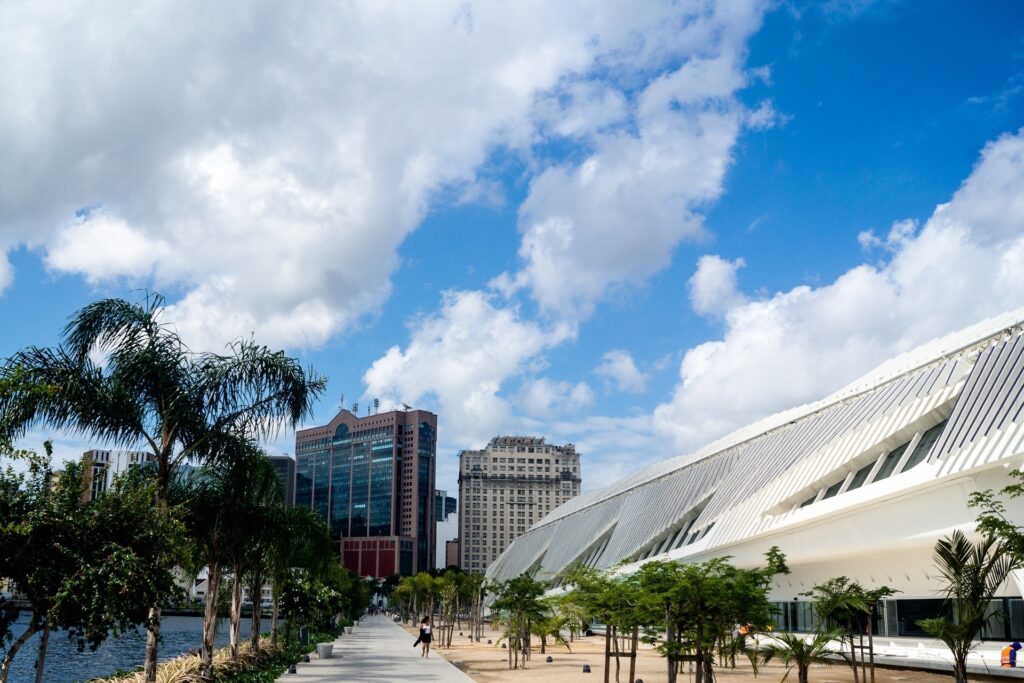
As I said in the title, in this post I won’t give beach tips. First for lack of knowledge – I’m so in love with Rio’s vibe as a city that I rarely “spend” time on the beach when I go there. And second, for wanting to highlight other places worth visiting on your next visit to the Wonderful City (Cidade Maravilhosa, as Rio is often called by Brazilians).
Some of the places that I’ll mention here are quite famous, but I have a feeling that they’re often overlooked, so it’s good to repeat the message. Write it down:
Central region: Palácio do Catete (Museu da República), Selarón Steps and Lapa Arches
Downtown Rio de Janeiro deserves at least a full day, preferably a weekday, when there are more open establishments and the movement of Cariocas coming and going is more intense. But before you get there, start the day at Palácio do Catete, which used to be the seat of the Brazilian government. Inside it, there is the Museu da República, our Republic Museum, where you can see the pajamas that president Getúlio Vargas wore when he killed himself as well as his suicide letter. The visits take place from Tuesday to Friday, from 10am to 5pm and admission costs R$6.00.
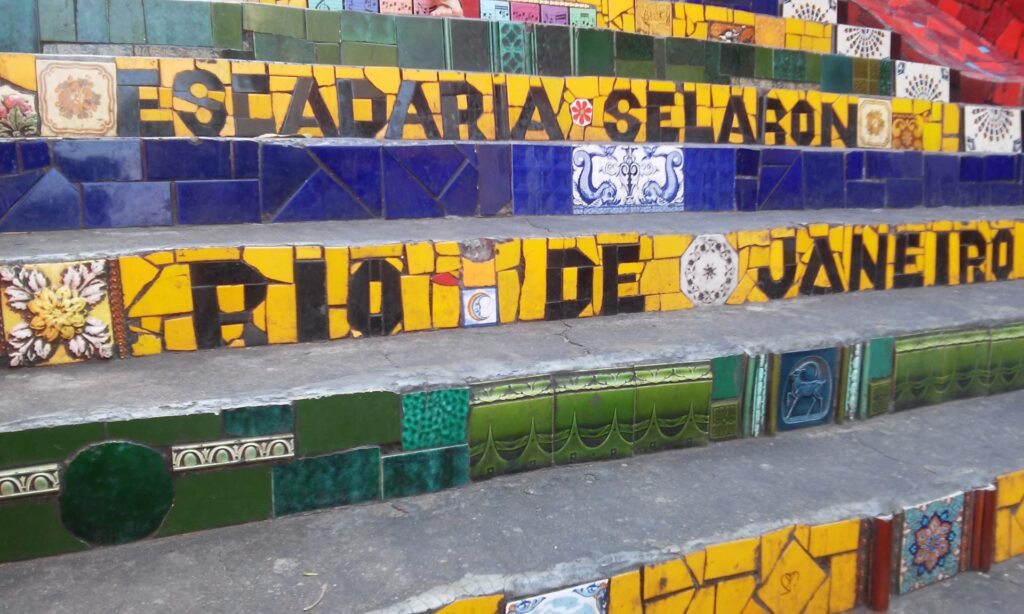
Details of Selarón Steps, at downtown Rio.
Keep walking to the Selarón Steps. The staircase was named after its creator, Jorge Selarón, who in 1990 decided to coat this steps with tiles, making a true work of art. Right next door are the Arcos da Lapa or Lapa Arches. The building is one of the accesses to the Santa Teresa neighborhood. Today, it’s a beautiful place for photos and a reference in the city. The arches mark the beginning of Lapa, a neighborhood famous for bars with live samba groups every day of the week.
Between books and sweets, still downtown: Theatro Municipal and Confeitaria Colombo
Continuing your stroll, pass by the imponent Theatro Municipal, our Municipal Theather, in the Cinelândia neighborhood and also the National Library, in the same Floriano Square. Hop into another library, the impressive and photogenic Royal Portuguese Reading Room. In a very tight space, a collection of 350,000 books surprises the visitors who pass by. Be sure to come in, it’s free!
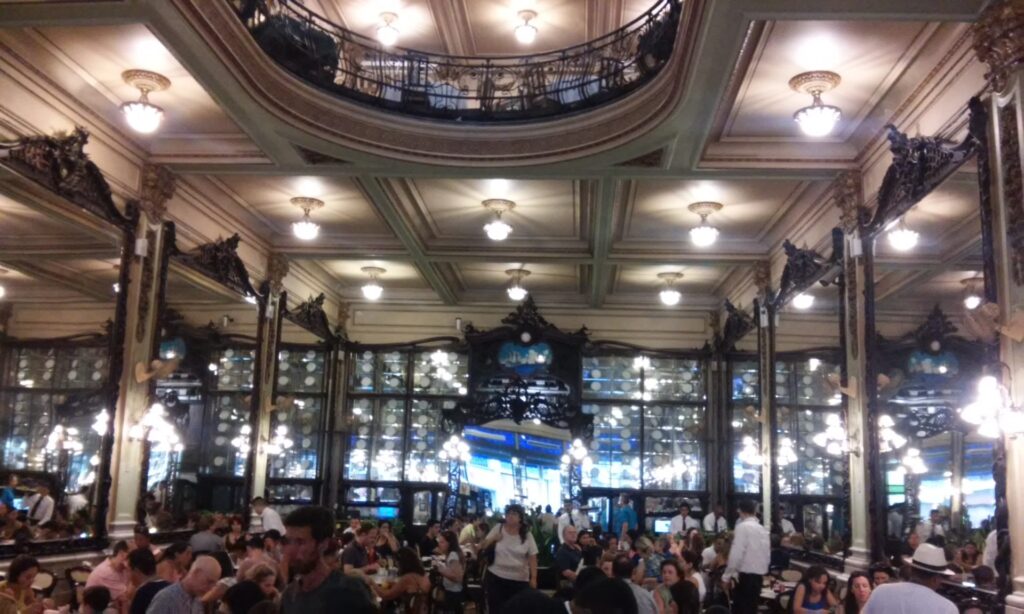
Make a quick stop for a coffee at the Confeitaria Colombo
Take a break at the wonderful Confeitaria Colombo. The shop is one of the most traditional jewels of the city, opened since 1894. Housed in a historic building, Confeitaria Colombo is, of course, famous for its sweets, which are really a treat. But other than that, the mirrored walls and a floor made from super-decorated tiles are really beautiful. Colombo offers lunch and is an incredible choice for a little coffee (the Brazilian “cafézinho, an espresso in the middle of the day) in the afternoon. There’s a branch inside the Copacabana Fort, but in my opinion, the whole charm is in the headquarters.
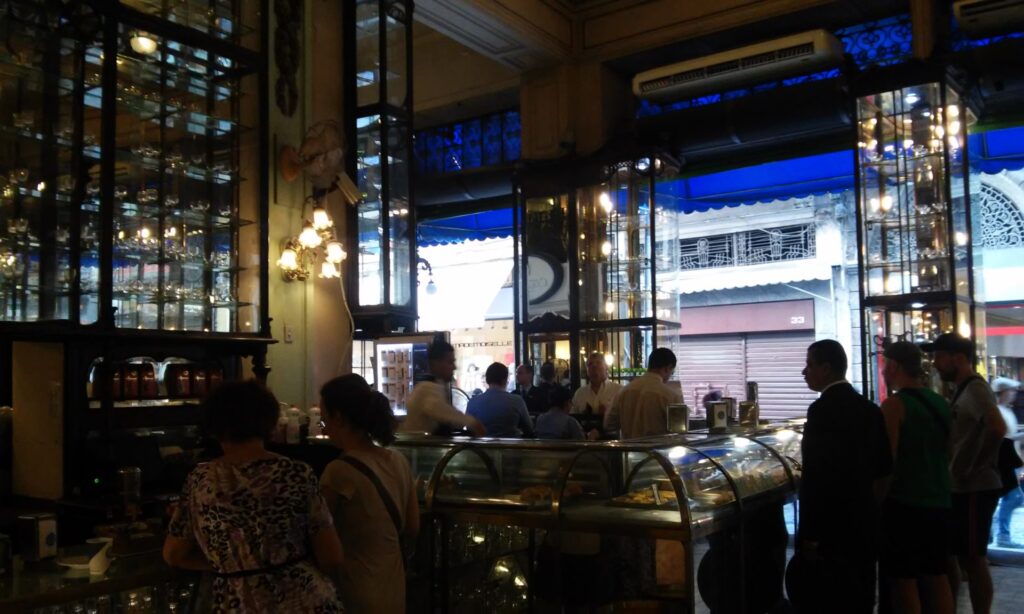
The centenarian confectionery looks impressive.
Following this, swing by the Candelaria Church. The city’s cathedral is unfortunatelly most famous for the massacre that occurredon its stairs in 1993 when eight young homeless boys were murdered. I don’t remember if I ever entered the Church itself, but you can see a tribute to the boys right by the door. It was there in Candelária also that the Olympic pyre was held during the 2016 Olympic Games.
When I travel, I like to walk around the center on weekdays to see the place in its normal operation. But if you’re in town on the first Saturday of the month, head back downtown for a walk through the Rio Antigo Fair, which takes place on Rua do Lavradio. Dozens of stalls take the road to sell handmade crafts, antiques and lots of other cool stuff.
Museums in downtown Rio de Janeiro
About 10 minutes’ walk from Candelária is Praça Mauá, where the Rio Art Museum (MAR) and the Museum of Tomorrow are located. MAR houses a collection that promotes a transversal reading of the city’s history. The Museum of Tomorrow is a science museum focused on innovations, as the name implies. Both cost R$20.00 and have free admission on Tuesdays. Following Avenida Rodrigues Alves, take a walk through the Porto Maravilha region, which used to be part of the city’s port and has now been revitalized.
Finally, go to the Banco do Brasil Cultural Center (CCBB). The place brings together a museum, with amazing and free temporary exhibitions, cinema and theater at super affordable prices. Behind it, on the outskirts of XV Square, a series of little bars get crowded during happy hour.
A little stretch of the downtown ride
You can also enjoy this trip through the central region to get to know the friendly neighborhood of Santa Teresa, which is sits on top of a hill close to Lapa. The neighborhood is somewhat old-fashioned, but it’s home to a vibrant cultural scene and bohemian life. The idea is to walk unhurriedly through its alleys – willing to go up and down its hills. You can either walk there, take a cab or go with the famous cable car, which goes over the Lapa Arches. It departs at Rua Lélio Gama, near the Carioca subway station and costs R$20,00 for a round trip.
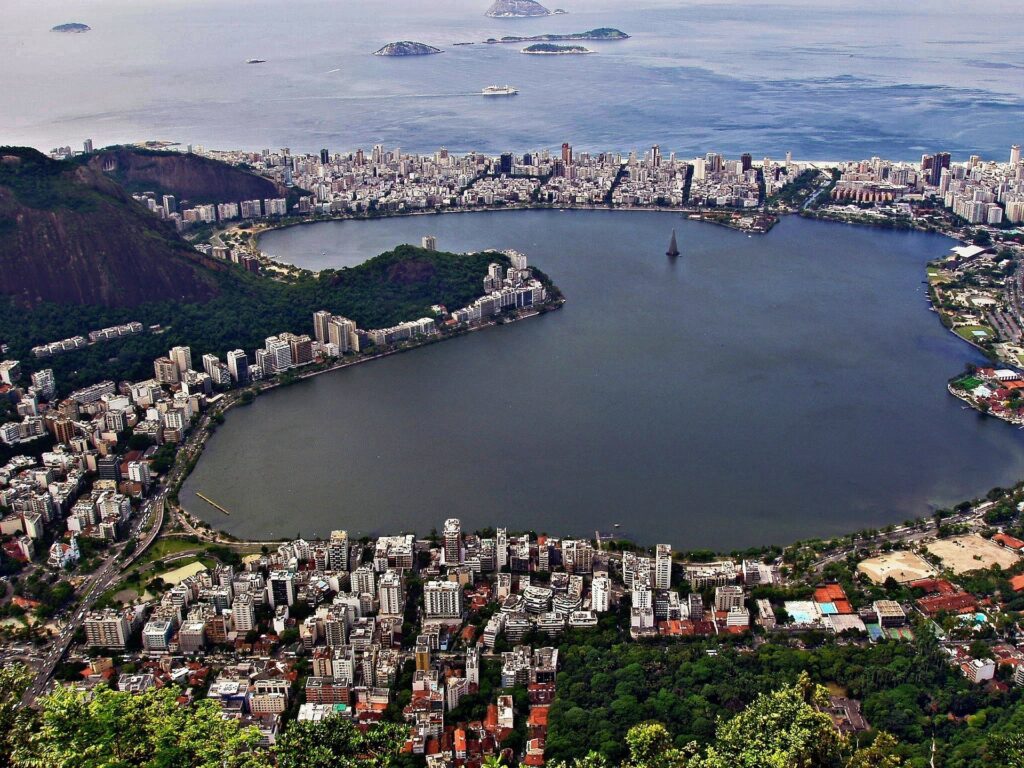
Rodrigo de Freitas Lagoon it’s perfect for a bike ride
Southside of Rio: you really can’t miss it
In the south, departing from Leblon beach, you can walk to the famous Rodrigo de Freitas Lagoon. It was there that some rowing and canoeing competitions took place during the Olympics. Here, the choice is to rent a bicycle, walk the bike path that surrounds the lagoon and then rest taking a sip of coconut water while enjoying the view.

The classic view of royal palm trees with the Cristo Redentor in the background.
Gávea
Going further west, the neighborhood of Gávea is home to the wonderful Moreira Salles Institute. A cultural center housed in a beautiful mansion that brings together exhibitions, cinema, and coffee shop. The Institute is open Tuesday through Sunday from 11am to 8pm, and admission is free. You can’t miss it.
In the same region, another great option is the Jardim Botânico, or Botanical Gardens, located in the neighborhood of the same name. The park is considered one of the largest and richest in the world and draws attention mainly by the huge royal palm trees at the entrance, which are beautiful and imposing. It’s open every day, and the ticket costs R$15.00.
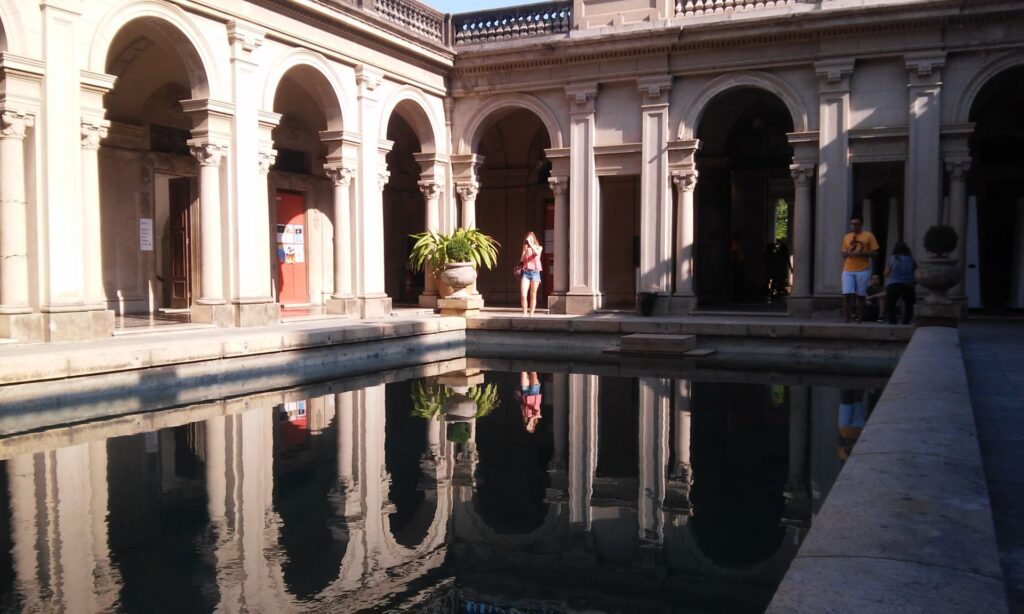
Inside the Parque Lage is an art school.
Last but not least, Parque Lage. It’s close to the Botanical Garden and brings together a park, an art school, and wonderful landscapes. It’s a romantic place and perfect for photos and a picnic. Access is free every day of the week.
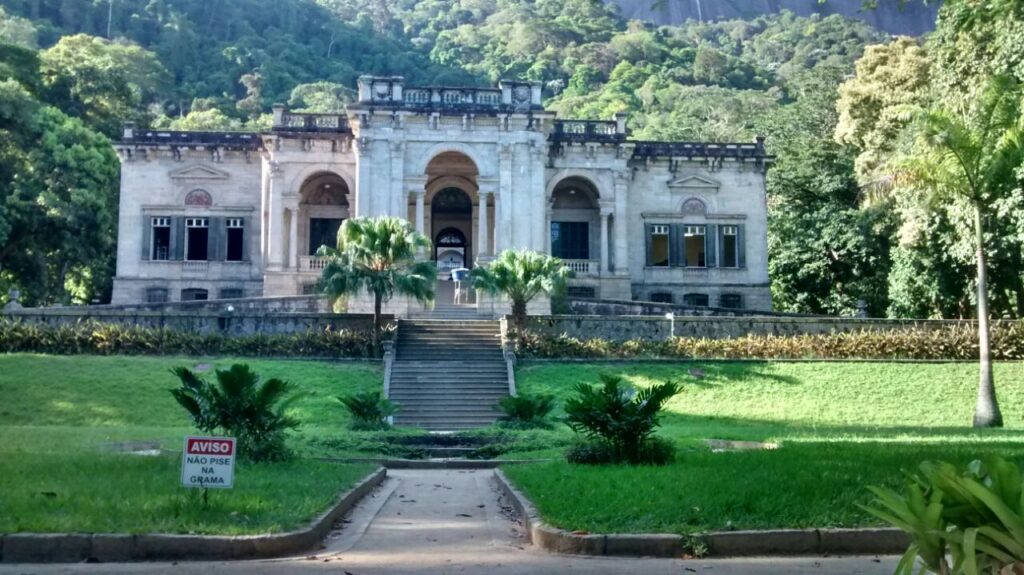
Enjoy a sunny day to have a picnic overlooking the Cristo.
A little bit more of Rio de Janeiro
If you still have some more time around town, we have some extra tips. The Aterro do Flamengo, for example, is a good choice. A huge park by the Flamengo beach, it houses the Rio Museum of Modern Art (MAM) and, on the weekends, is usually crowded with people playing sports. During the Carnival, the Aterro hosts numerous carnival blocks, such as the well-known Bloco do Sargento Pimenta (Sargent Pepper Block) and the Orquestra Voadora (Flying Orchestra, famous and super crowded).
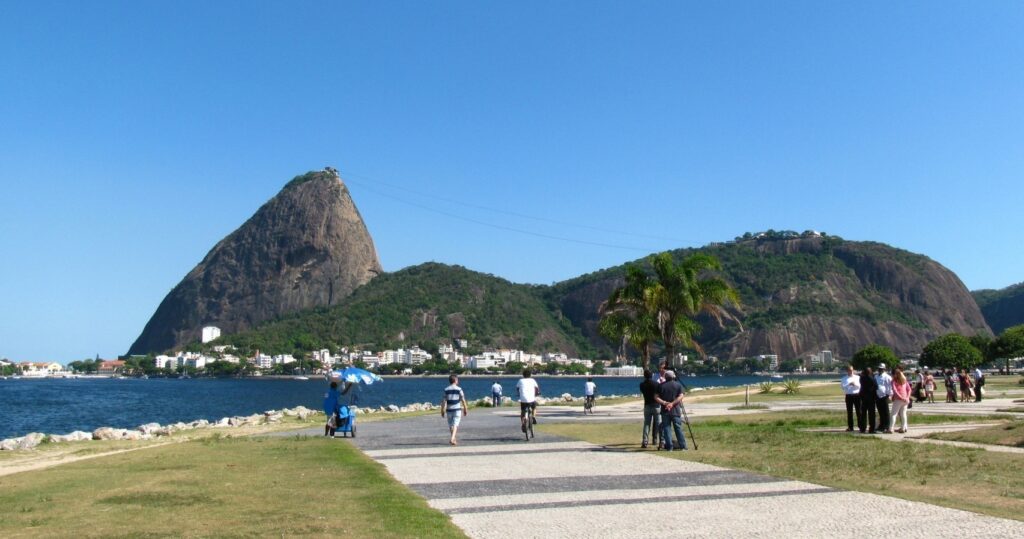
Aterro do Flamengo is one of the places in Rio with a most privileged view.
And a good way to end your visit to Rio de Janeiro is by looking at it from above, but this time investing in a slightly less crowded place. Vista Chinesa is almost a sort of secret, and it offers a slightly different view than the traditional Corcovado and Pão de Açúcar and is infinitely more empty.
End the day drinking a cold beer and enjoying the hustle and bustle of Mureta da Urca, one of the most Carioca places in Rio. After all this, I assure you, there’s no way not to fall in love with Rio de Janeiro!






Deixe seu comentário